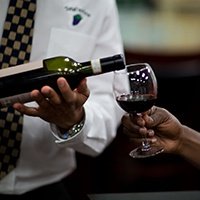Wines designed to be consumed young will relatively quickly be shipped to markets, whereas others may remain at the winery cellar for additional aging. Winemakers of super-premium wines—from Bordeaux, Barolo, Napa and beyond—cellar bottled wines for a year or more to soften tannins and promote a developed profile before sale, and consumers often continue aging at home (see “Cellaring”) just looking to open a bottle at the optimum time. Regulations in some places also demand bottle aging for wines, such as wines from Spain labeled “Crianza,” “Reserva” or “Gran Reserva.”
Much controversy surrounds bottle closures, which range from traditional and synthetic corks to screw caps and glass. Each has its own benefits and drawbacks in terms of wine preservation and cost. For example, while some wine lovers view metal screw caps with distain, they are not only more affordable but in some cases are more suitable for the wine. They offer a high level of protection from oxygen, which helps keep white and rosé wines fresh. However, some winemakers prefer cork and other more permeable seals because they want the wine to have some oxygen exposure to develop in the bottle.


